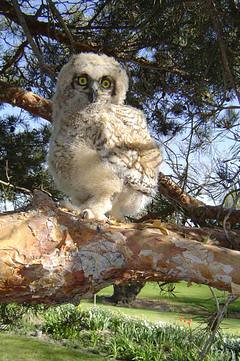The light sprinkling of rain soon turned into a downpour. Under gray skies, the trees at the edge of Kuzari Park in Jerusalem's Rehavia neighborhood looked fresher than ever, and the beading moisture restored the luster to the Jerusalem stone. Some girls on a Birthright trip were whispering in the cafeteria on the Yad Ben Zvi campus while sipping coffee from paper cups. Excited figures moved quickly in the interior courtyard, between the home of Israel's second president, Yitzhak Ben Zvi, with its stone building and two wooden cabins, and Beit Hahalutzot (the Pioneer Women's House ), making last-minute preparations for the dedication of the remodeled building, scheduled for today.
Read more .... Haaretz
"The human history of this place makes you smile. It's really quite extraordinary," says legendary architect Ada Karmi-Melamede, whose firm did the redesign. "Obviously, you yearn for the kind of modesty projected, I think, by [original architect] Genia Averbuch's building. Its facade is somewhere on the scale between institutional and homey. There's hardly anything in Israel that looks like that."
Almost 90 years have passed since Ben Zvi's wife, Rachel Yanait Ben Zvi, first sank her hoe into the ground of the plant nursery that lay next door to the couple's modest home at the edge of Rehavia. After some years, the nursery became a farm employing new immigrant women who needed a place to live, a social setting and training in various branches of farm work and crafts. The working women lived in a cabin on the grounds of the nursery and sold their agricultural produce near Kuzari Park, then a main street in the plans for the garden district that Richard Kaufmanm built in Rehavia Aleph.
In the years leading up to World War II, the masses of immigrants who had become refugees grew larger all the time, and the single women among them needed shelter. Thus, the New York Women's League funded special pioneer women's houses, first in Haifa and later in Tel Aviv. The homes hosted seminars, cultural events and studies, with emphasis on Israeli geography and lore and, of course, the Hebrew language. Independent cooperative ventures - sewing and knitting workshops and laundering services - operated alongside the houses.
The area occupied by the working women in Rehavia was deemed suitable for the pioneer women's house in Jerusalem, and it became one thanks to a donation from the Women's League. In 1939, an architectural competition was held and Genia Averbuch, who'd planned the Zina Dizengoff Square and Batei Habima residential complex in Tel Aviv as well as many private residences around the country, was declared the winner. Her building was dedicated four years later. It had 25 residential rooms, in which 90 women lived, as well as a dining hall, meeting hall and crafts workshops. The building was S-shaped, and, in addition to the expansive lawn in front of the entrance, the wings created an interior courtyard.
The building was owned by the Women's League for Israel, and for decades it hosted various activities until these dwindled at the end of the 1990s. The young women lived there under modest circumstances, two or even three to a room. Bathrooms were few and shared by several rooms. Despite the proximity to the home of the country's second president (also known as Beit Valero ), the two structures operated with separate budgets and faced different streets. For many years, the former presidential home and the cabins near it served as the offices and classrooms of Yad Ben Zvi, operating two research institutes, one focusing on the Jewish communities of the East and the other on the history of the land of Israel and Jerusalem.
In 2003, Yad Ben Zvi decided to buy Beit Hahalutzot, renovate it from the ground up, establish the International School for Jerusalem Studies in it, and remove the separation between it and Beit Valero. Two years later, Yad Ben Zvi held a closed architectural competition calling on candidates to present plans to preserve the structure and redefine its use. The winner was the architectural firm of Karmi-Melamede.
Saving the shell
She kept the shell of the building in the new design, but the interior was altered from the ground up. The small rooms and their narrow doorways were transformed into large, well-lit classrooms, offices and a spacious library. The seminal challenge was in the redesign was Yad Ben Zvi's intention to create a united campus out of the separate structures. Karmi-Melamede chose to focus on the space between the buildings and create a green axis leading from Ibn Gvirol Street to Kuzari Park. "What's between the buildings is as important as the buildings themselves," the architect says.
The structure contains about 2,500 square meters on three floors as well as a basement level. Yad Ben Zvi designated many uses - classrooms, offices, a library, bookstore, auditorium and cafeteria - to this not particularly large building, and this concentration has a way of creating some surprising situations and a bit of disorientation.
The spacious, bright, bi-level library occupies the upper stories of the west wing. It' s a deceptive space: One of its walls, seen immediately when one enters, is very wide even though the space itself is fairly narrow. "It's a research library," Karmi-Melamede explains, "so we wanted to create a space where the books embrace you. But the place doesn't get many visitors, and a possible means of attracting visitors is with a structure in which the scale on one side is very promising, but which leads you in a gradually narrowing space."
The most impressive aspect of the renovated building is the way soft, inviting spaces were created inside the rigid shell, and how moving between the spaces exposes visitors to differing levels of light. The only visible external addition is the new cafeteria - a wavy-shaped glass wall enclosing the space between the two sides of the interior courtyard. But it seems the addition does not serve Karmi-Melamede's purpose regarding the sight lines in the courtyard and the way light enters the building. Paradoxically, this noncommittal shape is not flexible enough to serve other future needs, and only highlights the flexibility of the original building.
One invisible addition is a sunken courtyard, located next to the building's main entrance, with exterior steps leading to a 300-seat auditorium. "The hall practically begs for symmetry, because nothing else in the building is symmetrical. At the edge of the building you want something a little quieter," says Karmi-Melamede. To overcome the limitations on digging deep into the rocky Jerusalem soil, the architects built the auditorium radially with the stage as the focal point, creating a spacious, festive feeling.
All the interior spaces are surprising with their light, attained by means of rounded ceilings and pale wood panels between the rooms. "I've never put dark wood into a stone building. I think stone is sad, and what helps lift its mood is light colors - the white walls, pale wood, light floor. Every time you introduce dark tones you get, on the one hand, a very dignified effect - it always reminds people of old-fashioned libraries, and so on - but, on the other hand, dark colors swallow up the light. Light is the most important building material, and I always try to let it in indirectly, so that it bounces from wall to wall and ends up very soft.
"Jerusalem is a city of stone, but nowadays it wants to be Tel Aviv and that's a problem," she continues. "Today you'll see more glass walls in Jerusalem, but glass is foreign to the city. The problem with Jerusalem buildings is not transparency but how to get more light into them and make them less sad. I think the story here is finding the balance between the heavy and the airy. Stone is fundamentally a heavy material; it wants to sink into the ground. I think that in the culture of stone, you have to find something that will rouse it out of its slumber. Stone is very deeply asleep."


 >br>
>br>









1 comment:
If you would like an alternative to casually approaching girls and trying to find out the right thing to do...
If you would rather have women hit on YOU, instead of spending your nights prowling around in crowded pubs and nightclubs...
Then I urge you to watch this eye-opening video to discover a strange little secret that has the potential to get you your personal harem of hot women:
FACEBOOK SEDUCTION SYSTEM...
Post a Comment